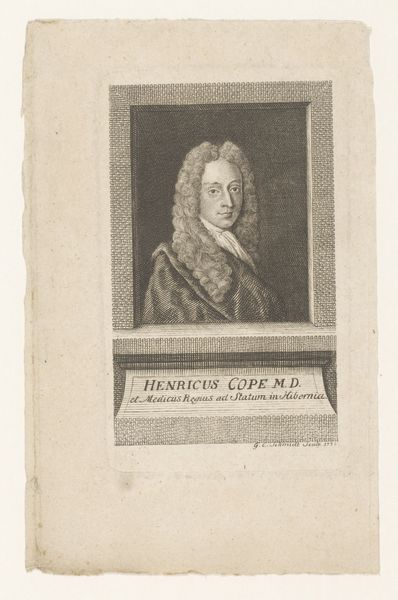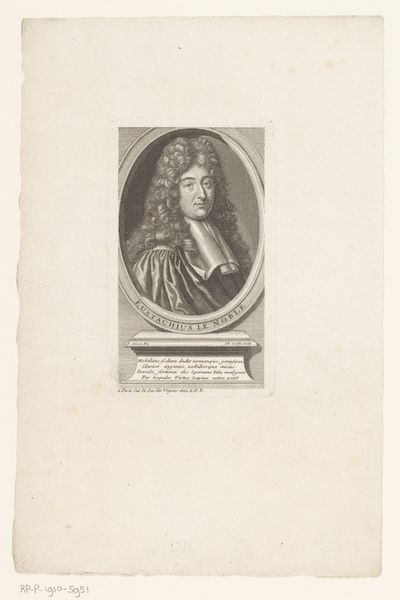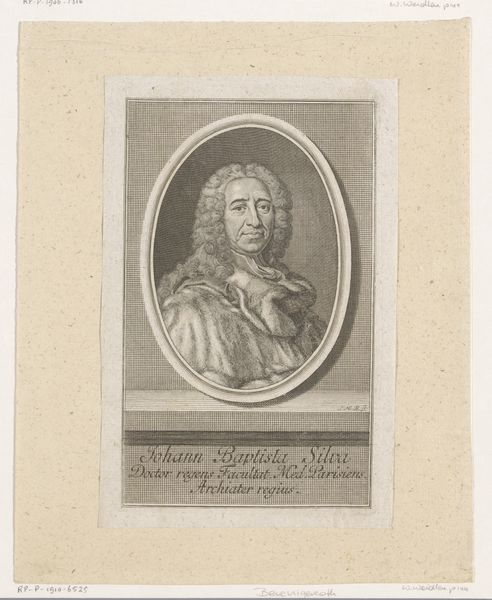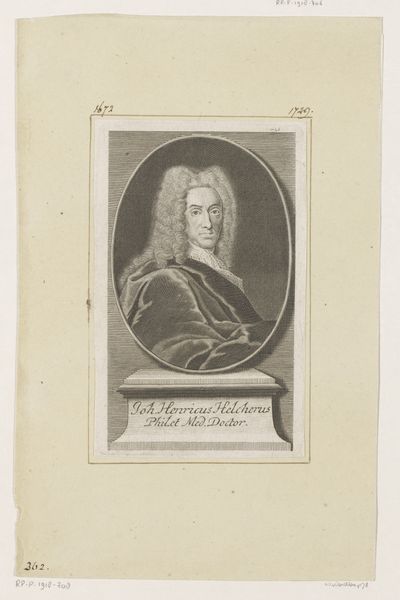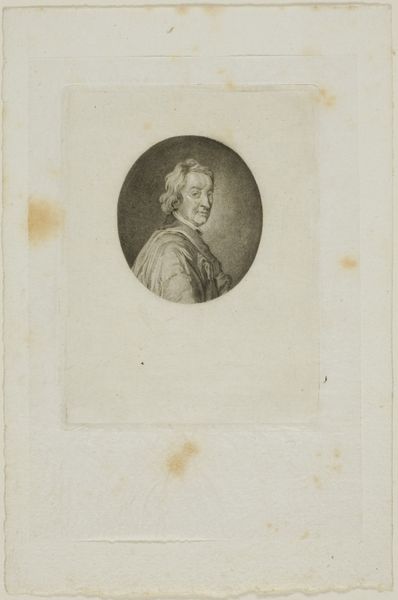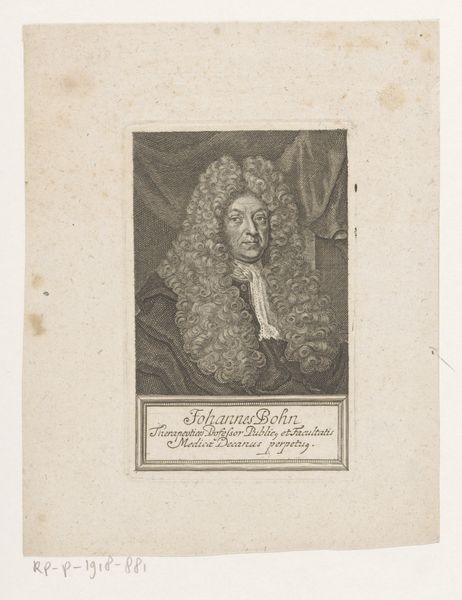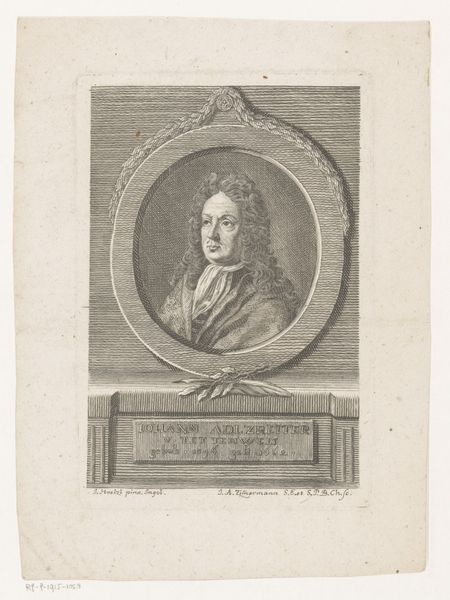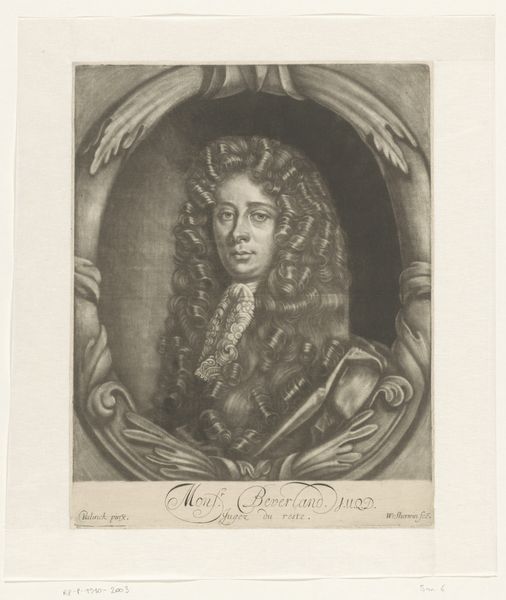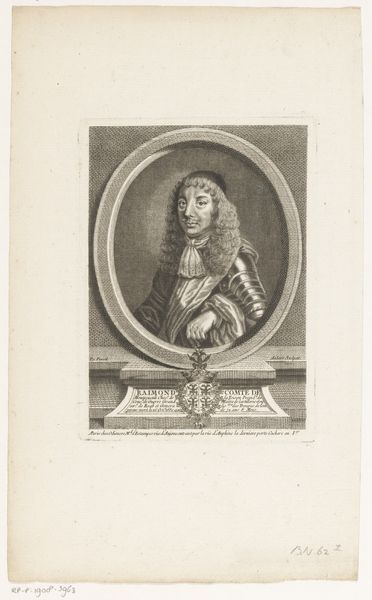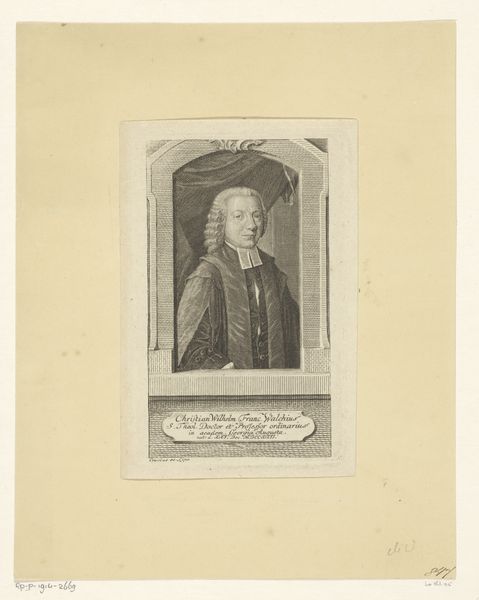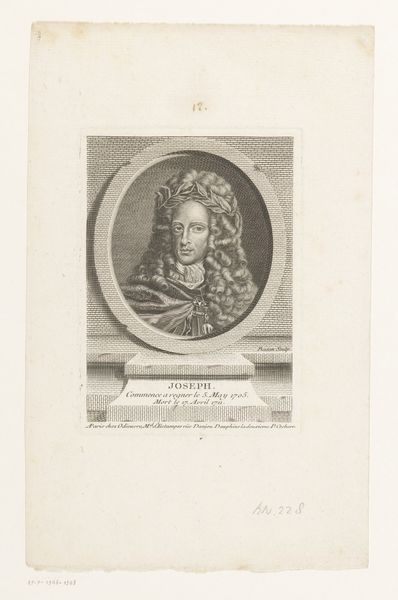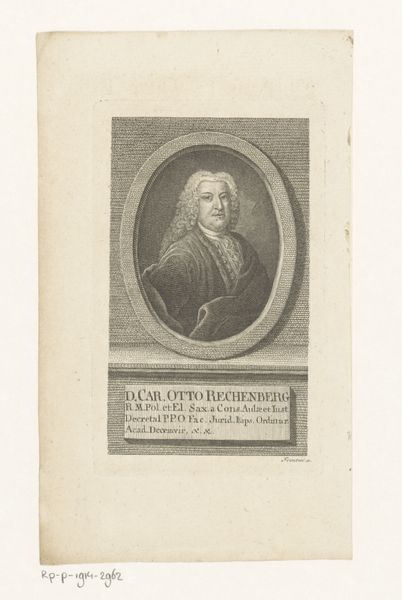
print, engraving
#
portrait
#
baroque
# print
#
history-painting
#
engraving
Dimensions: height 157 mm, width 95 mm
Copyright: Rijks Museum: Open Domain
Editor: Here we have a portrait of Henry Cope from 1737 by Martin Bernigeroth. It's an engraving. It feels very formal and hierarchical, a snapshot of privilege. What do you see in this piece? Curator: It's fascinating how seemingly simple portraits can be read as documents of power. Think about the role of physicians like Cope within 18th-century Irish society. They weren't simply healers; they were often entangled with the ruling class, benefiting directly from a colonial system that disadvantaged so many. Editor: So you're saying that his position as "Medicus Regius," the King's physician, is key to understanding the portrait? Curator: Precisely. Consider how portraiture was often used to legitimize authority. Bernigeroth's engraving immortalizes Cope, associating him with royalty and reinforcing a social order rooted in inequality. How might the realities of medical access have looked for ordinary Irish people at the time? Editor: I hadn’t really considered it in terms of societal power structures before. I was mainly thinking of it as a historical record of someone's likeness. Curator: And that's valid, but it also serves as a cultural artifact, hinting at larger socio-political narratives of its time. Can we ignore that class and colonial power are crucial aspects? It prompts us to question who gets memorialized, and what biases are at play. Editor: That's given me a lot to think about regarding the layers of context embedded within seemingly straightforward portraits. Curator: Indeed. And recognizing those layers encourages a much deeper, more nuanced understanding of art's role in society.
Comments
No comments
Be the first to comment and join the conversation on the ultimate creative platform.
